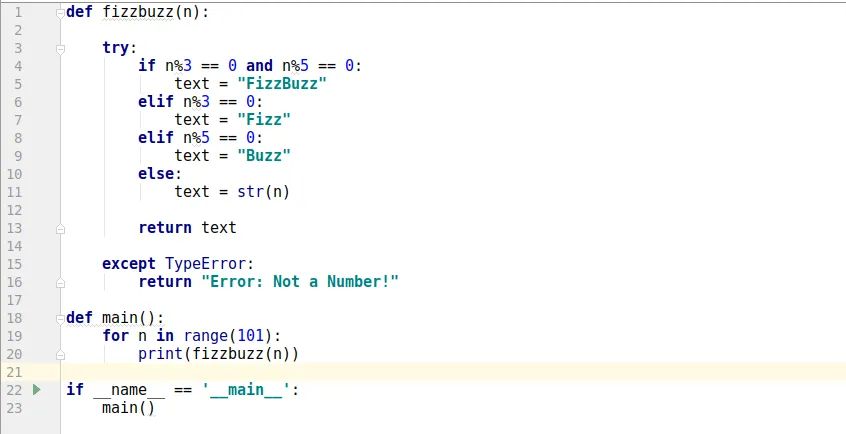FizzBuzz

After coming across a post from @reggaemuffin where he hosted a coding challenge where I submitted a pretty amateur solution in Python he insisted that I make a separate post where I could explain my thinking process and the logic behind it. It's not a very difficult challenge but it's a pretty nice one to try for the sake of learning and potentially teaching others. So here's the rules to the challenge:

The fist thing that should pop up into your head when you hear the word 'multiples' is the modulo operator(%). So what exactly is the modulo operator I hear you ask? Well thanks for asking. We can use the modulo operator to return the remainder of a division. For example, 8%5 will give us an answer of 3 since 5 goes into 8 once and 3 is left which is the remainder. When one number is fully dividable by another a remainder of 0 is left. This way we can determine if a number is a multiple of another by dividing the two numbers using the modulo operator and getting a remainder of 0. Amazing right? Not really but it's perfect for this challenge so we'll be using it. Let's get to the the code.

For the sake of explaining I made my solution a little longer and more manageable than this gloriously ugly one line solution I found online.
Code Explanation
On line 1 we start by creating our function that will do all the heavy work for us. We add a parameter for 'n' which will be used as a variable storing the number that we want do some calculations with in order to determine if its a multiple of 3, 5 or both.
On line 3 we start our try-except which we'll use to handle value errors such as when a string is passed to our function since we can't divide a word by n dumber. duh
From lines 4 - 11 we have all of our conditional statements which will help us determine if we should either print 'Fizz', 'Buzz', 'FizzBuzz' or if you should just return the number. We check if n is a multiple of 5 and 3 first otherwise if we checked if n was a multiple of 3 or 5 first there's a definite change that we'll miss a FizzBuzz since if we find a multiple of 3 or 5 first the statement will result in true and the rest of the statements will be skipped. We store our word in a variable called test which we return on line 13.
On line 15 and 16 we return an error message in case someone tried to send a string or any other datatype with which we can not do calculations with.
On lines 18 - 20 we define our main function which will be called by the function on lines 22 and 23. In our main function we have a for loop which will call our fizzbuzz(n) function 100 times passing it an integer from 0 - 100 as it loops through the integer range of 0 -100 and print out the returned text variable that contains our words or the integer in case it's not a multiple of 3 or 5.
Please Note: This is obviously not the shortest most efficient solution out there. I wrote it this way in order to help show people the thinking process as well as the logic behind solving a problem like this. I hope you learned something :)

Team South Africa banner designed by @bearone